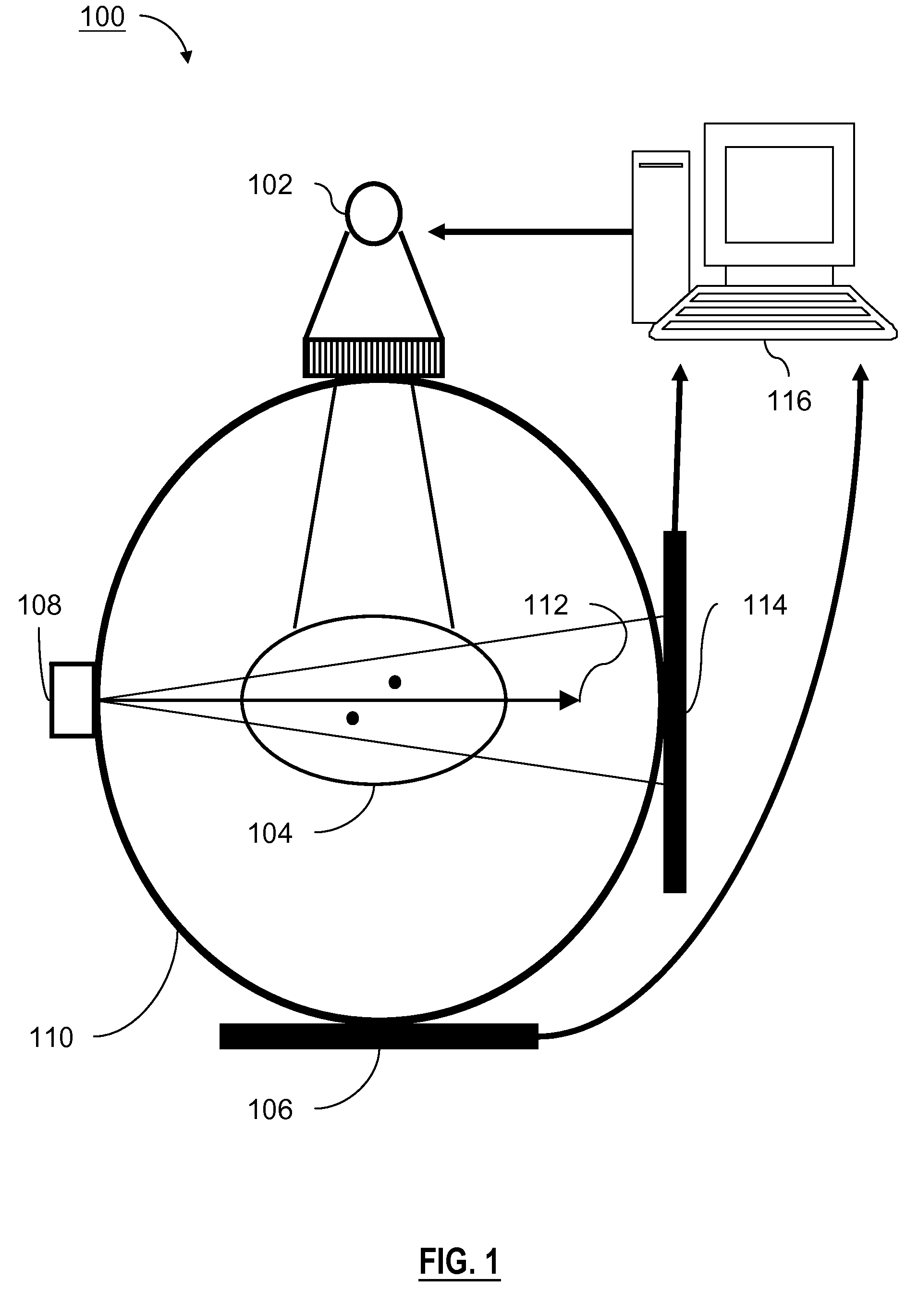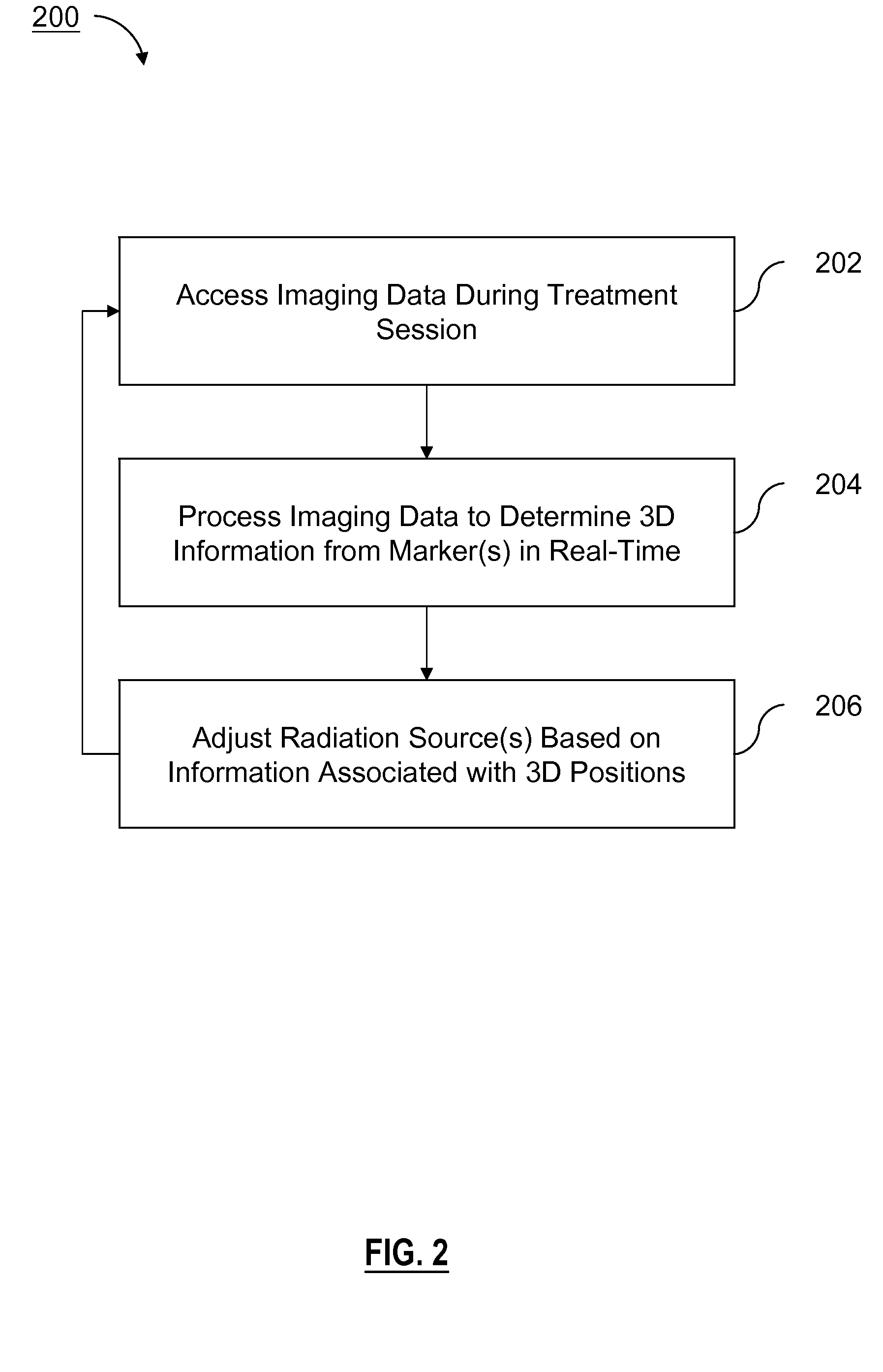Real-time motion tracking using tomosynthesis
a technology of tomosynthesis and real-time motion, applied in the direction of material analysis using wave/particle radiation, instruments, etc., can solve the problems of reducing the quality of ct images, unable to collect sufficient quantity of ct image data for image reconstruction, and inability to generate ct images with sufficient quality or accuracy
- Summary
- Abstract
- Description
- Claims
- Application Information
AI Technical Summary
Problems solved by technology
Method used
Image
Examples
Embodiment Construction
Various embodiments are described hereinafter with reference to the figures. It should be noted that the figures are not drawn to scale. It should also be noted that the figures are only intended to facilitate the description of embodiments. They are not intended as an exhaustive description of the disclosure or as a limitation on the scope of the disclosure. In addition, an aspect described in conjunction with a particular embodiment is not necessarily limited to that embodiment and can be practiced in any other embodiments.
FIG. 1 is a schematic diagram illustrating a treatment radiation system 100, according to one embodiment of the disclosure. The treatment radiation system 100 includes a first radiation source 102, an electronic portal imaging device (EPID) 106, a second radiation source 108 mounted on a gantry 110, a flat panel detector 114, and a control system 116. The first radiation source 102 is aimed towards a patient 104 and to the EPID 106. The patient 104 has markers, ...
PUM
| Property | Measurement | Unit |
|---|---|---|
| energy | aaaaa | aaaaa |
| rotational angle | aaaaa | aaaaa |
| rotational angle | aaaaa | aaaaa |
Abstract
Description
Claims
Application Information
 Login to View More
Login to View More - R&D
- Intellectual Property
- Life Sciences
- Materials
- Tech Scout
- Unparalleled Data Quality
- Higher Quality Content
- 60% Fewer Hallucinations
Browse by: Latest US Patents, China's latest patents, Technical Efficacy Thesaurus, Application Domain, Technology Topic, Popular Technical Reports.
© 2025 PatSnap. All rights reserved.Legal|Privacy policy|Modern Slavery Act Transparency Statement|Sitemap|About US| Contact US: help@patsnap.com



